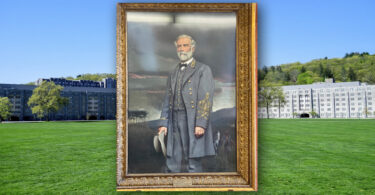Since the Biden administration urged federal agencies to name designated leaders to spearhead diversity, equity and inclusion initiatives, the creation of chief diversity officers is facing pushback from conservatives and some DEI practitioners who question whether that’s even the right way to address barriers.
Recent resignations at the State Department and the Pentagon have thrust these officials and the work they do into the spotlight, drawing attention not just to the fact that vacancies leave a leadership gap, but to concerns about whether a chief diversity officer even has the resources to do the job.
A spokesperson for the State Department said it will be appointing a new chief diversity and inclusion officer to replace Gina Abercrombie-Winstanley, and is in the process of reviewing candidates “for that important position.”
The Department of Defense has not said whether it’s planning to replace Gilbert Cisneros’ role as chief of the diversity and inclusion office. Cisneros is stepping down in September. A spokesperson declined to comment further.
“I do think that a lot, or some, of this is well-intentioned,” said Mike Gonzalez, a senior fellow at the Heritage Foundation.
“It’s people who actually do care a lot about disparities. They care a lot about equality. They do think that racial crimes have been committed in our history, which they have. That’s undeniable. But DEI also reinforces the message to people that are considered ‘victim categories.’ [It] confines them to that. Ultimately, DEI does not fix the problem.” . . . .
. . . . Critics of DEIA initiatives have also said they don’t believe the government’s proven there’s a problem, and without that, it’s difficult to buy into solutions, however well-meaning they may be.
“I don’t think the case has been made,” said Erec Smith, professor and co-founder of Free Black Thought, a nonprofit dedicated to highlighting viewpoint diversity and individualism within the Black community.
“I don’t think if African Americans have 30% of the population, they need to be 30% of every workforce,” he said.
“I think when you start doing that, you won’t necessarily throw out merit, but you tend to because you’ve got to find those numbers. You’re not taking into consideration that maybe people don’t want to do that job. Maybe the people who want to do that job complement a certain socio-economic background or something like that.”
Gonzalez also pointed to the way disparities are measured and evaluated. Instead of lumping people into monolithic groups based often on one race, disaggregate that data to account for other factors, like nation of origin or household income, that might affect outcomes.
“[Then] you start getting some idea of a policy to help treat the disparities and not just say, which is what DEI philosophy says, [that] all disparities are prima facie evidence of systemic racism,” he said. . . . . (read more on Federal Times)
White House Executive Order Installs Political Commissars Throughout Government









Leave a Comment